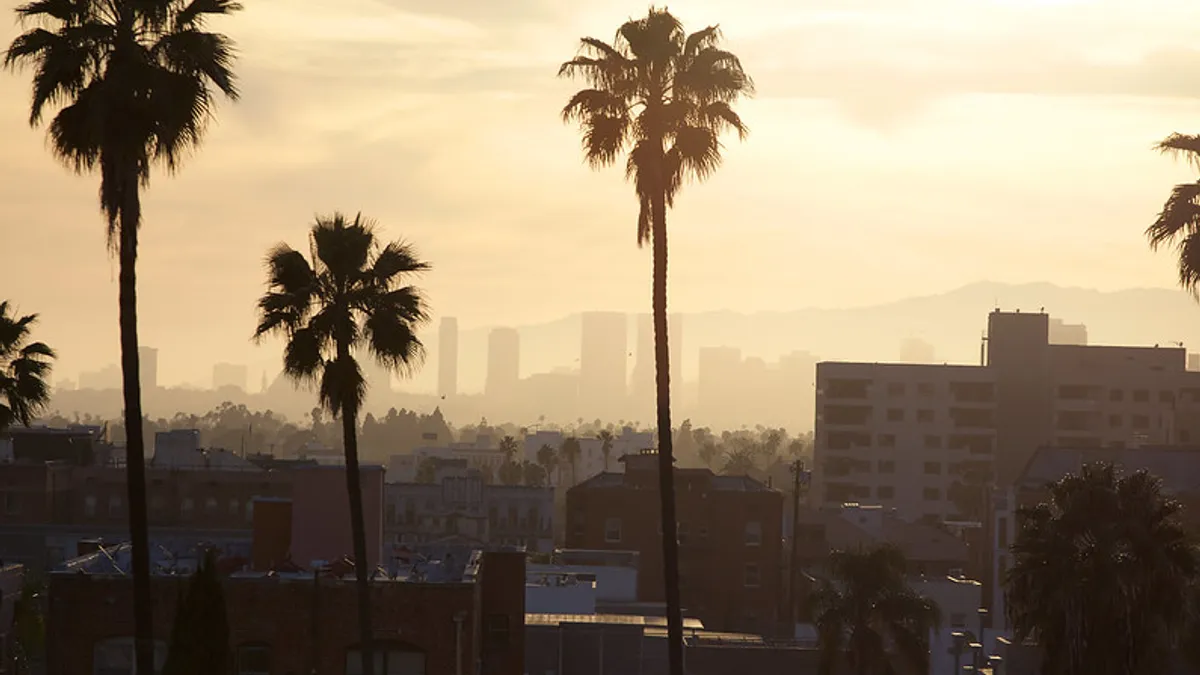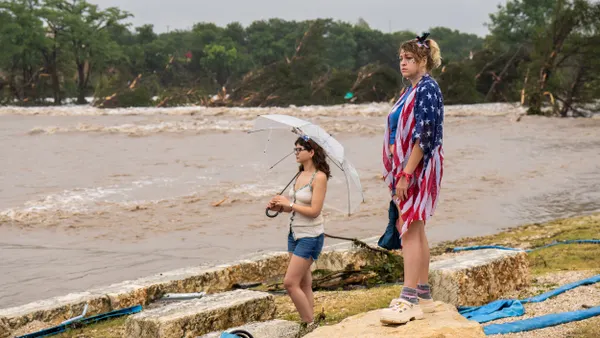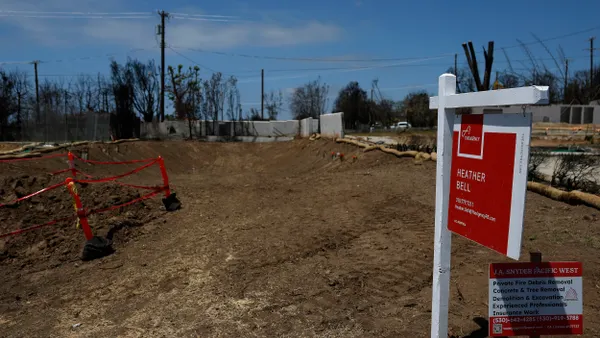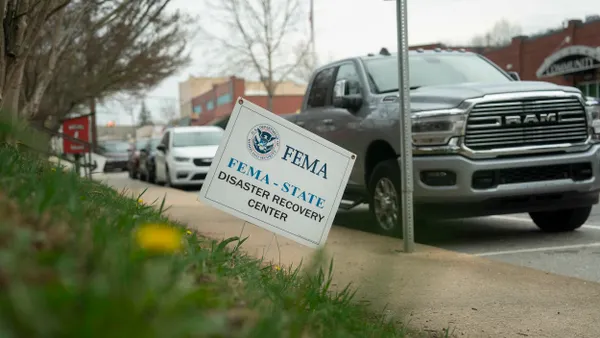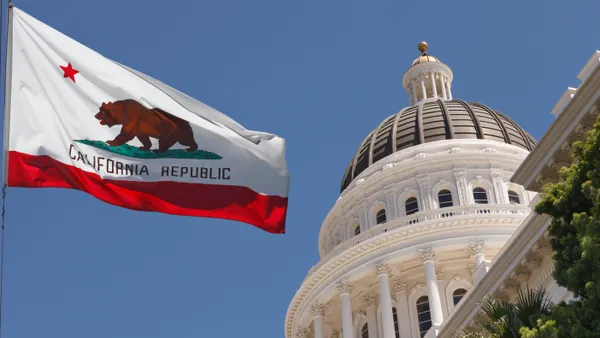Dive Brief:
- Los Angeles announced last week it will pilot Google's new Tree Canopy Lab technology that combines AI and aerial images to assess the city's tree canopy, or tree cover density. The platform shows the tree canopy at the neighborhood level to identify gaps and determine where the city should make investments.
- Tree Canopy Lab is integrated into Google's existing Environmental Insights Explorer, which helps cities measure and track environmental data such as air quality and emissions from the building and transportation sectors. The data analyses allow cities to track their progress toward meeting climate action and sustainability goals.
- Google will continue to improve the technology with input from Los Angeles' experience. "We want to hear more about how L.A. is using this and how other cities will use this," said Ruth Alcantara, program manager for Google's AI for Social Good initiative. "We are hoping to expand to hundreds of cities in the coming years."
Dive Insight:
Planting trees and other vegetation is a popular method to mitigate the urban heat island effect — especially when city structures reflect heat making temperatures higher than surrounding communities. Trees provide surface cooling through shade and their natural water moving processes, or evapotranspiration.
The temperature of surfaces that are shaded could be 20-45 degrees cooler than their peak temperatures, and evapotranspiration could reduce peak summer temperatures on surfaces by 2-9 degrees, according to the EPA. Vegetation's natural respiration process also scrubs the air of pollutants. Organizations including the Nature Conservancy highlight these as reasons to promote urban greening to improve citizens' health.
Low-income neighborhoods and those predominantly inhabited by people of color often have less vegetation and greenspace than other neighborhoods. Consequently, these communities often are warmer and have higher levels of pollution, therefore making the priority areas for beneficial tree resources.
Tree Canopy Lab uses high-resolution images sourced from Google Maps. The images are ingested in three forms and put through machine learning that is specially trained to detect trees, then the tree canopy data is visualized on top of a map of Los Angeles, said Google software engineer Austin Benavides.
The tool generates tree coverage summaries for individual census tracts so the city can determine which demographics live in areas with the most and the least tree cover. That data is visualized in tandem with socioeconomic and health factors to help inform future tree planting efforts. This feature enables the city to equitably distribute resources to neighborhoods in most need and is a step toward greater environmental justice.
"This is something that's going to be very valuable, as the urban forest canopy and equity is not just something L.A. experiences. We see it across the country where different communities within cities don't have the same access to that green cover," said Los Angeles City Forest Officer Rachel Malarich. "We're looking at tracking our progress and making prioritizations with the tool. ... We'll be able to see if the plans and policies we're putting in place are having the desired impact: Are we having an increase in canopy in these communities or are there adjustments we need to make to reach these goals?"
Los Angeles is just one of several cities — including Chicago, Nashville, TN and Washington, DC — undergoing significant work to increase its tree cover to mitigate the urban heat island effect. Last year, Malarich became Los Angeles' first forest officer, a position intended to oversee growth in the city's urban forest and in planting 90,000 trees by the end of 2021. More than 37,000 have been planted so far, she said.
The city also launched Cool Streets LA last year to lower temperatures and mitigate climate change by adding shade in the hottest and most vulnerable neighborhoods.
Malarich notes that just planting trees isn't enough to make a significant climate impact. Tree preservation and maintenance are critical for sustaining a healthy urban forest that benefits citizens, she said.
Google's tool assesses a city's tree density, but it does not log a tree inventory. A tree inventory contains more granular data about each tree within a city including species, size, health and maintenance needs. That data is usually collected by arborists who physically go to each individual tree, and it is therefore time consuming and labor intensive.
Although Tree Canopy Lab currently is not an inventory tool, the canopy analyses provide valuable information at a broader scale that helps city employees with their urban forest workload and management, Malarich said.



